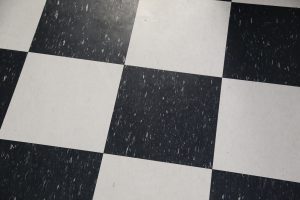Welcome to our comprehensive guide on all things asbestos, dedicated to Asbestos Awareness Month. Learn more about this renowned yet hazardous mineral and how to handle it safely. Whether you’re a homeowner, a business owner, or a construction professional, this blog post equips you with the knowledge you need to navigate the complexities of asbestos management and ensure a secure living and working environment.
What is Asbestos?
Asbestos is a naturally existing mineral discovered on the Earth’s surface, renowned for its robust fibers with exceptional durability, fire resistance, and insulation capabilities. It can cause negative health effects if fibers are breathed into the lungs.
ACM stands for Asbestos Containing Materials, there are two types:
- Friable Asbestos Containing Materials: These were primarily used in commercial and industrial settings for fireproofing, soundproofing, and insulation. However, they can be found in some old domestic heaters, stoves, hot water systems, and associated pipe lagging and in the backing of vinyl and linoleum floor coverings. They are the most dangerous type of ACM, as they can be made of up to 100% asbestos.
- Non-friable Asbestos Containing Materials: They are mainly made up of a bonding compound (such as cement), with up to 15% asbestos. Bonded materials containing asbestos are solid and quite rigid and the asbestos fibers are tightly bound in the material. If damaged, the fibers can be released and potentially become airborne.
Most Common Types of Asbestos
- Chrysotile is the most common form of asbestos. It can be found today in the roofs, ceilings, walls, and floors of homes and businesses.

- Crocidolite was commonly used to insulate steam engines. It was also used in some spray-on coatings, pipe insulation, plastics, and cement products.

- Anthophyllite was used in limited quantities for insulation products and construction materials. It also occurs as a contaminant in chrysotile asbestos, vermiculite, and talc. It may have a grey, dull green, or white colour.

- Tremolite and Actinolite are not used commercially, but they can be found as contaminants in chrysotile asbestos, vermiculite, and talc. These two chemically similar minerals can be brown, white, green, grey or transparent.

- Amosite was used most frequently in cement sheets and pipe insulation. It can also be found in insulating boards, ceiling tiles, and thermal insulation products.

I found Asbestos in my property. What should I do?
The first thing is to avoid any activities that might disturb the asbestos, such as drilling, cutting, or sanding, as this can release dangerous fibers into the air. Secondly, you should contact a registered Quantity Surveyor, like us, to provide a visual (not intrusive) asbestos inspection and subsequent Asbestos Register and Management Plan in order to identify the assumed presence and location of asbestos or Asbestos Containing Materials (ACM) within the property and recommend the appropriate control measures.
We have an experienced team to carefully inspect, assess, and recommend the appropriate and feasible control measures for each ACM that we identify. Our ultimate goal is to help your strata property have a living place free of asbestos risk.

